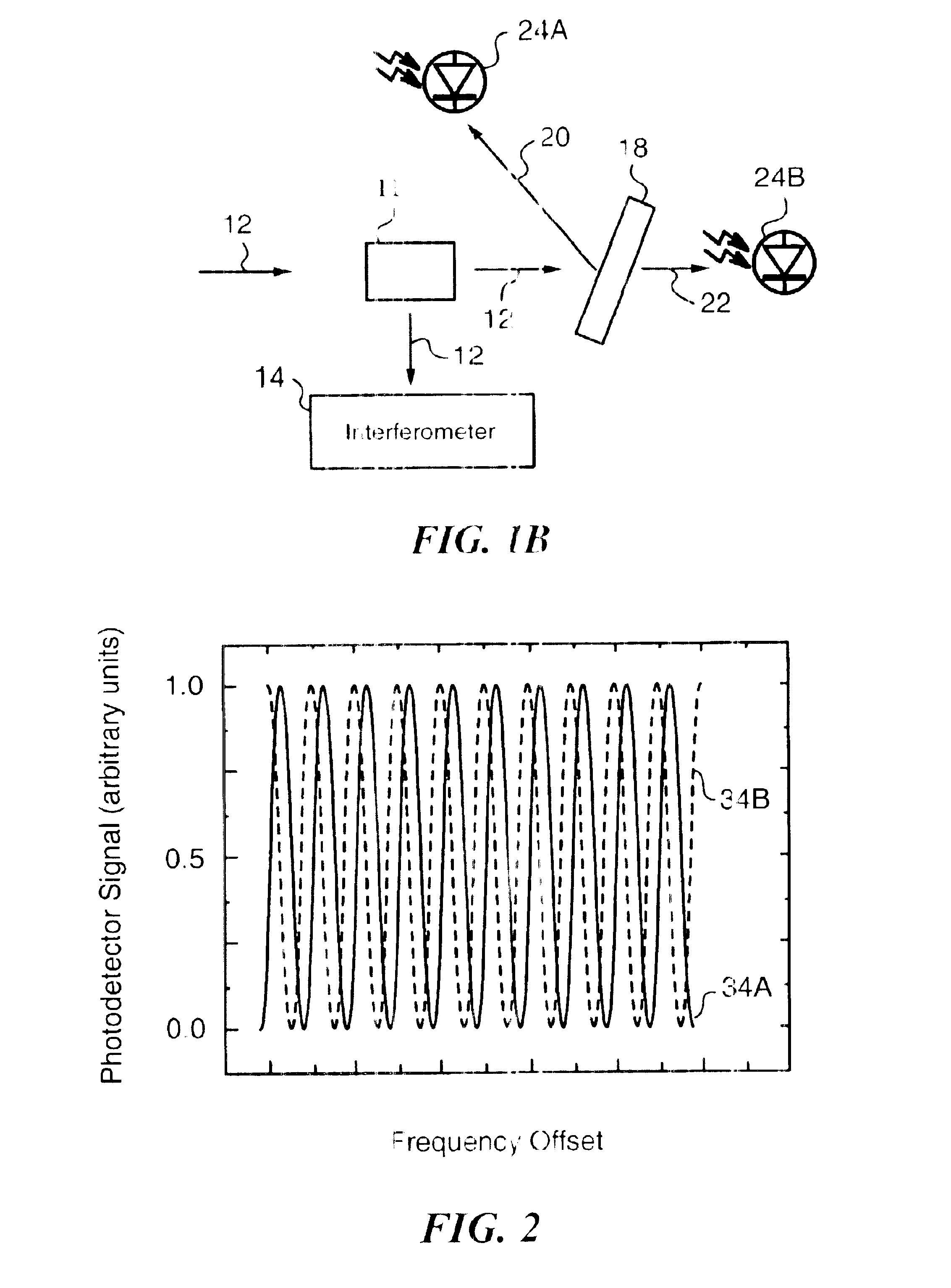Apparatus and method for determining wavelength from coarse and fine measurements
a wavelength and coarse measurement technology, applied in the field ofapparatus and a wavelength determination method of optical signals, can solve the problems of limited wavelength resolution, interference affecting the operation of entire telecommunications networks, and limited performance of prior art wavelength lockers, and achieve the effect of effective visualization of the wavelength of optical signals
- Summary
- Abstract
- Description
- Claims
- Application Information
AI Technical Summary
Benefits of technology
Problems solved by technology
Method used
Image
Examples
example
The following example is intended to provide a person skilled in the art with specific parameters to be used in designing an apparatus analogous to the one discussed above in reference to FIG. 5. This example is provided for illustration purposes only and does not impose any limitations on the invention. In this example, sample optical signal 52 propagates through front surface 68 of 400 GHz etalon 62, whose back surface 70 bears a 60% reflective coating 64. Optical signal 52 undergoes refraction, and is reflected off back surface 70 to the front surface 68, and again undergoes refraction as it emerges through front surface 68 in the form of second beam 80. Also, a portion of optical signal 52 is reflected off front surface 68 of etalon 62 in the form of first beam 78.
In essence, etalon 62 splits the optical signal 52 into beams 78, 80 representing two copies of the optical signal 52 with slightly different propagation directions. Etalon 62 is designed such that the desired beam ang...
PUM
 Login to View More
Login to View More Abstract
Description
Claims
Application Information
 Login to View More
Login to View More - R&D
- Intellectual Property
- Life Sciences
- Materials
- Tech Scout
- Unparalleled Data Quality
- Higher Quality Content
- 60% Fewer Hallucinations
Browse by: Latest US Patents, China's latest patents, Technical Efficacy Thesaurus, Application Domain, Technology Topic, Popular Technical Reports.
© 2025 PatSnap. All rights reserved.Legal|Privacy policy|Modern Slavery Act Transparency Statement|Sitemap|About US| Contact US: help@patsnap.com



